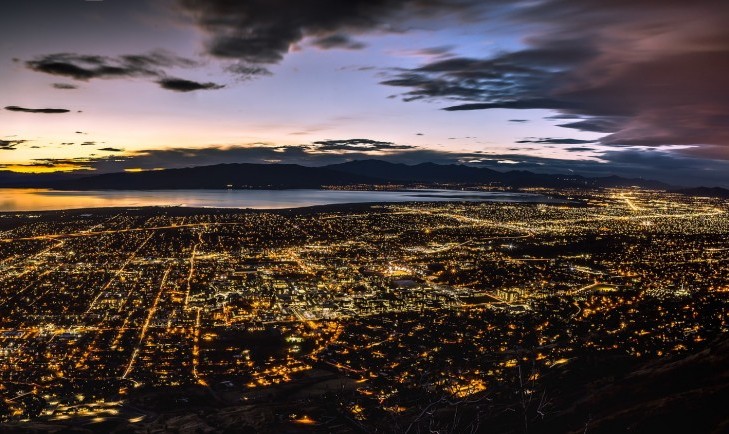
The Western Governors' Association keeps you updated on news of the West. Here are the western stories for the week starting Jan. 28, 2019 that you don't want to miss.
Western economies are among the strongest performing in the country, according to a study by the Milken Institute. The Best Performing Cities index measures job creation, wage gains and technological developments to evaluate growth in metropolitan areas.
Eight of the top ten large metropolitan areas are in the West. Provo, Utah (pictured) took the top spot, and cities in California, Texas, Washington and Colorado also ranked highly for their competitive business climates, tech industries and high-profile corporate headquarters.
Reno, Nevada jumped 26 spots to the #11 ranking, thanks to growth in manufacturing jobs and construction. Boise, Idaho followed at #12, for low business costs and an affordable cost of living that facilitate in-migration. Bend, Oregon nabbed the top spot for best-performing small city for the third year running. Read the report.
Mitigating Mussels: More than $230 million in mitigation costs and lost revenue could be spent annually in Montana if invasive zebra and quagga mussels were to infest the state’s lakes, according to the Montana Invasive Species Council. The report finds that the biggest impacts would be felt in the recreation, agriculture and infrastructure sectors.
Fire’s Impact on Fish: Although wildfires can harm fish by heating water to lethal temperatures and destroying supportive vegetation, researchers are studying the potentially positive benefits of fire on fish. Scientists have found that in some places, fish populations rebound after wildfire. Learn more about the studies.
A Model for Outdoor Rec: A small town in Colorado with a population of 1,000 could serve as model for western communities looking to boost outdoor recreation and tourism. Officials in Ouray, known for its ice climbing park, released a five-year plan addressing funding, liability and crowds. “We are going to have to find out how to manage these recreational resources and create a sustainable future,” said Colorado Outdoor Recreation Office Director Luis Benitez. “Ouray is a great example of what we can do.”
All Aboard: Built in the 1880s, the Cumbres & Toltec Scenic Railroad travels 64 miles along the Colorado-New Mexico border. Watch a ten-minute video sharing the story of those who built and maintain this American tradition, which has revealed the “staggering beauty of the American West for nearly 140 years.”
Get the latest news about the West and its governors by following the Western Governors' Association on Twitter, Facebook and LinkedIn.